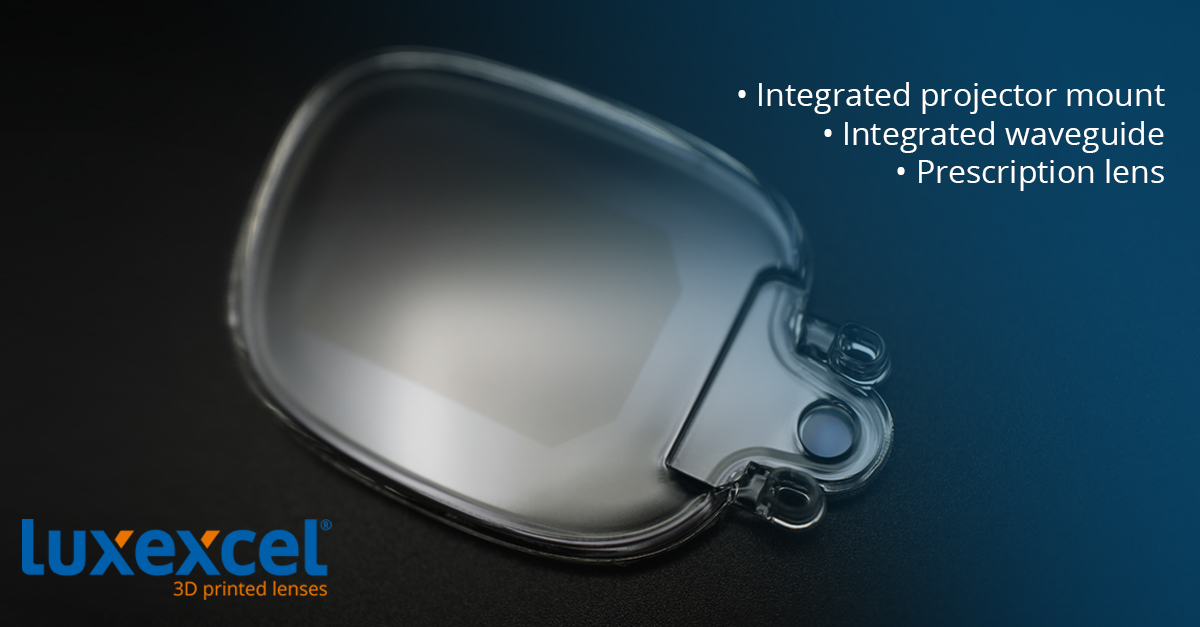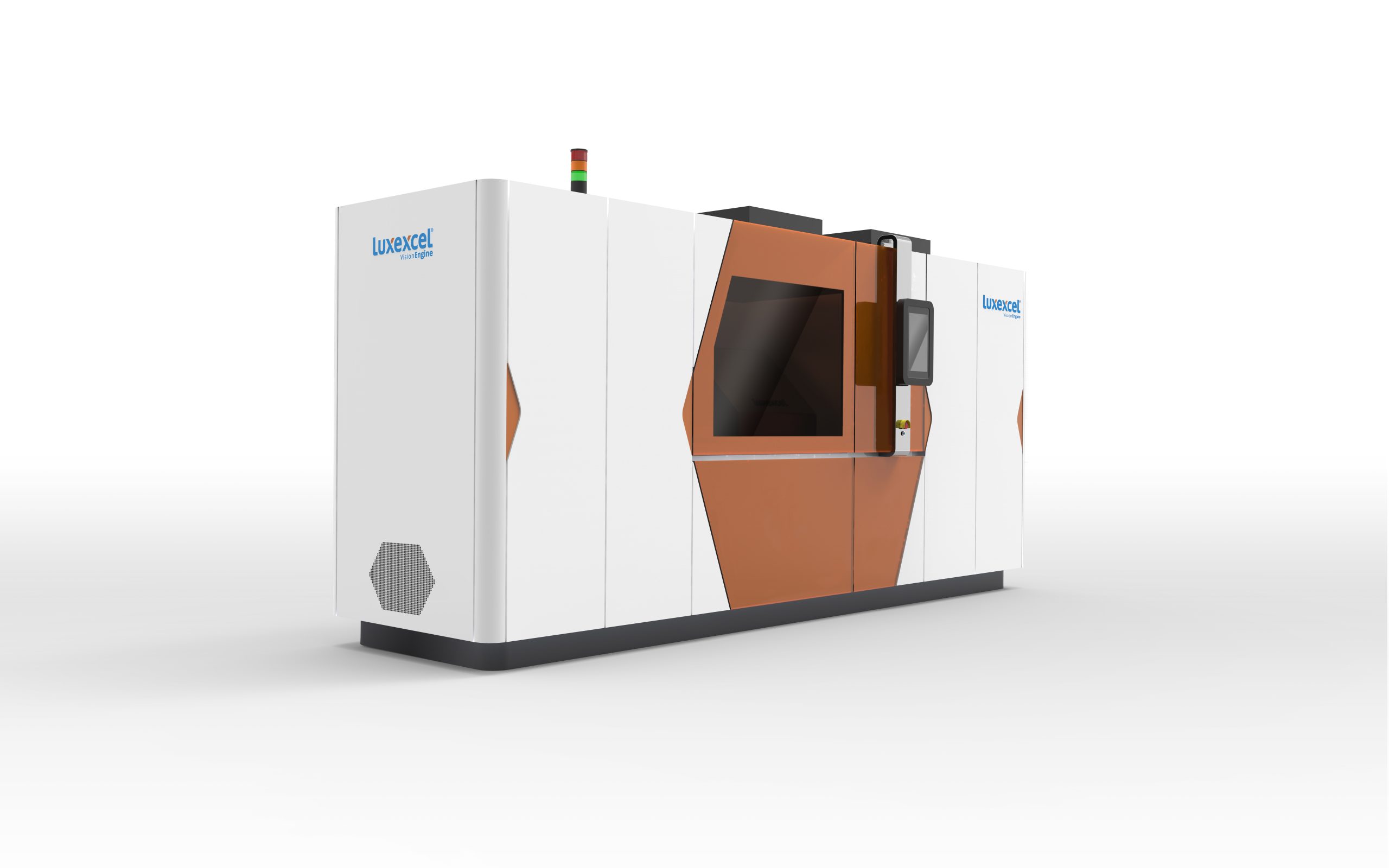Luxexcel, a specialist in 3D printed prescription lenses, has launched VisionPlatform 7, a platform that enables manufacturers to integrate 3D printed prescription lenses into the production of smart glasses.
Developed in response to market demand, the platform includes new features that facilitate the manufacture of lightweight, thin prescription lenses for use in commercial smart glasses frames. VisionPlatform 7 combines high-tech hardware, proprietary materials and advanced software to manufacture the lenses, which can be used by companies seeking to accelerate their Augmented Reality (AR) eyewear projects.
“The launch of VisionPlatform 7 begins a new era in the manufacturing of prescription smart lenses,” said Fabio Esposito, Chief Executive Officer at Luxexcel. “To compete in the race to launch consumer-ready smart glasses, eyewear manufacturers need to address prescription in their smart glasses devices. Luxexcel provides a disruptive solution where smart technology is seamlessly combined with a prescription lens, rather than adding prescription power to the smart device as an afterthought.
“Luxexcel is accelerating the market introduction of true consumer smart glasses by allowing technology companies to manufacture prescription smart eyewear in the comfort of their own manufacturing home.”

3D printing prescription lenses
Luxexcel was founded in 2009 in the Netherlands, and focuses on 3D printing prescription lenses using its proprietary hardware, software and materials. The company’s technology is based around its Vision Engine process, which jets a VisionClear resin onto a build plate before photocuring it under UV light.
The technology enables printing directly onto glass or polymers, making it compatible with commercial glasses frames. The lenses are also customizable, with films or LCD screens able to be inserted between the frames’ layers and therefore lending them AR abilities.
Luxexcel received a $14.7 million cash injection in 2017, and a further $13.9 million in 2018, to develop its 3D printed lenses. Using the funding, the company has steadily ramped up its production capabilities, reaching a landmark of 5,000 prints per year in February 2019, and later 50,000 lenses in December last year.
Following a teaser announcement last year, the firm partnered with waveguide manufacturer WaveOptics in February to 3D print prescription smart glasses with AR functionality. Through their partnership, the companies will produce standardized lens modules that can be used by other smart eyewear manufacturers to create end-use devices.

Features of VisionPlatform 7
The launch of Luxexcel’s VisionPlatform 7 follows a successful product demonstration earlier this year, which illustrated how a prescription lens, a waveguide, and a projector could be combined into a 3D printed prescription lens with AR capabilities. The company’s family of custom materials ensured these integrated components were able to bond sufficiently with the prescription material.
The platform also prints critical features, such as the air gap required for a waveguide, that are otherwise difficult to manufacture without birefringence – which refers to when an incident ray of light is split into two rays that are polarized at right angles or in opposite directions.
VisionPlatform 7 is “technology agnostic” and capable of integrating a variety of objects during the 3D printing process to create prescription smart eyewear. The platform prints a range of powers from high and low and on diameters spanning one to 65 mm. Luxexcel’s materials have strong adhesion properties and are capable of withstanding high temperatures. This ensures that a range of anti-reflective and hydrophobic coatings can be applied to the lenses as part of the firm’s existing ophthalmic post-processing steps.
As part of the 3D printing process, a hardcoat is integrated into the lens with an even surface in order to protect the smart technologies within. Custom lenses can also be printed to address common refractive errors, such as single vision and freeform lenses and multifocal progressive designs.
VisionPlatform 7 is capable of actively adjusting and aligning key process parameters to ensure the technology’s reliability, quality, and high yield. As such, the 3D printed lenses produced by the platform meet ISO, ANSI, and FDA requirements for prescription eyewear.
“To manufacture a device that combines prescription and smart functions requires a combination of skills in technology and optics,” said Guido Groet, Chief Strategy Officer at Luxexcel. “It can be difficult to find this combination of skill sets in one team, so we offer this experience to our partners. We provide our customers with a complete solution to manufacture prescription smart lenses so that they can focus on developing the technologies and content for the device.
“With VisionPlatform 7, more innovative features can be added to smart glasses and the only limitation is the imagination of the designer.”
Nominations for the 2021 3D Printing Industry Awards are now open, have your say who is leading the industry now.
Subscribe to the 3D Printing Industry newsletter for the latest news in additive manufacturing. You can also stay connected by following us on Twitter and liking us on Facebook.
Looking for a career in additive manufacturing? Visit 3D Printing Jobs for a selection of roles in the industry.
Subscribe to our YouTube channel for the latest 3D printing video shorts, reviews and webinar replays.
Featured image shows a 3D printed prescriptive lens integrated with a waveguide. Image via Luxexcel.



